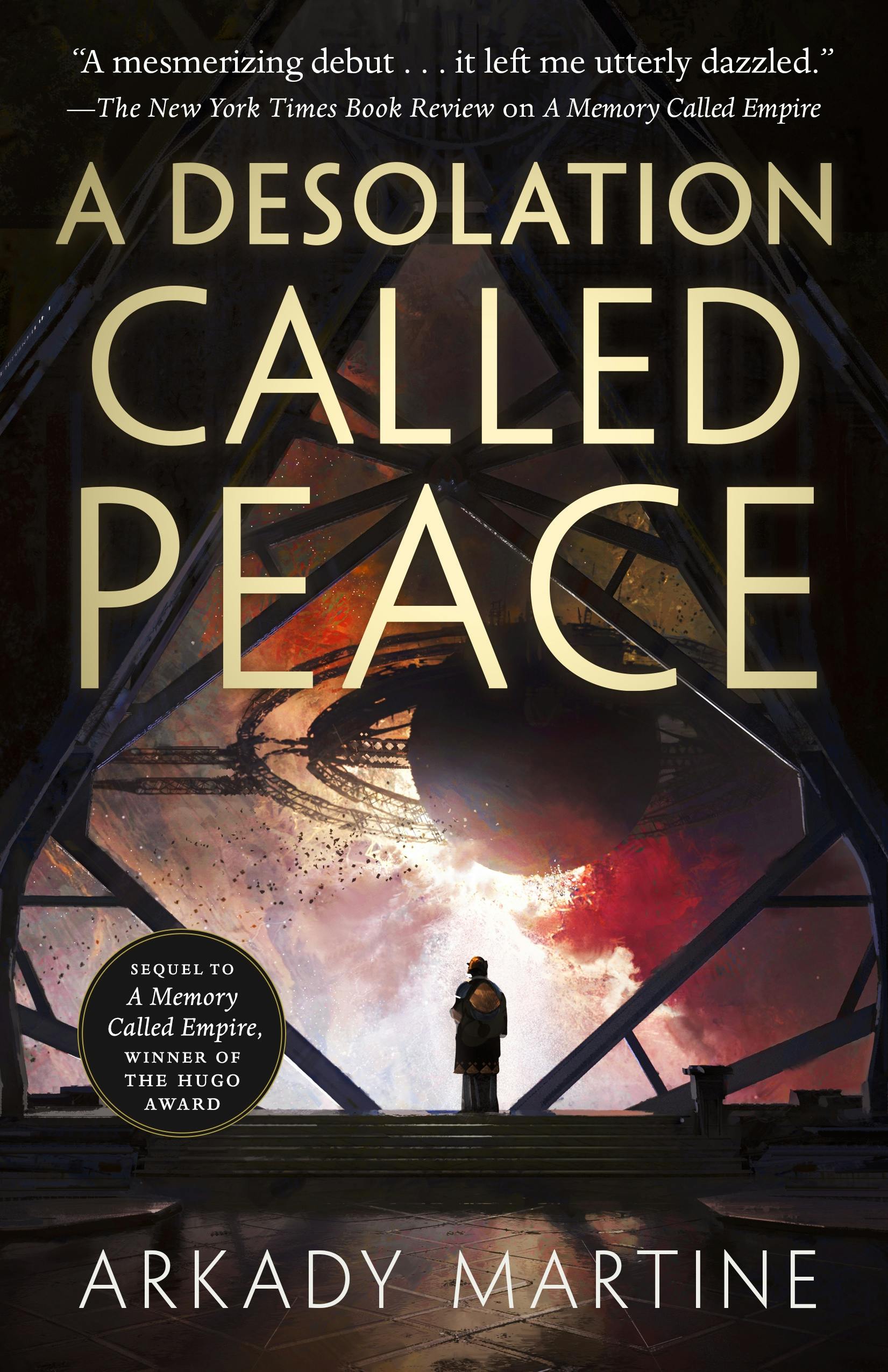A Desolation Called Peace

Review
A Desolation Called Peace, by , is the second book in the Teixcalaan series. It tells the story of Mahit and Three Seagrass trying to stop the war between the Teixcalaanli Empire and a mysterious alien race.
A Desolation Called Peace picks up right where A Memory Called Empire left off: a few months after the events of the first book, following the same characters, and continuing to develop the same themes and motifs.
The theme of “What is the definition of you?” carriers over from A Memory Called Empire. In the first book, “you” was expanded to Mahit with her chain of memories from the Imago machine, the group-mind of the Sunlit, and even the culture of the Teixcalaanli Empire itself. In this book, adds new examples: the alien hive-mind connected together through a parasitic fungus, and the shard pilots who form a group-mind with each other through their ships. This exploration of “you” reminded me most of ’s Firefall series: both focus on what constitutes a “mind”, and the way A Desolation Called Peace expands on A Memory Called Empire feels similar to how Echopraxia builds on Blindsight.
A Desolation Called Peace also continues the starchart motif, but focuses it more explicitly on neural networks and patterns in the brain. The captain is described as the brain of their ship, there are the fractal tattoos of Twenty Cicada, and the branching mycelium of the alien fungus.
Although I enjoyed the first contact with hostile aliens plotline more than the courtly intrigue of A Memory Called Empire, the relationship between Mahit and Three Seagrass felt less well developed. uses a standard romance trick—breaking the characters apart with a misunderstanding before reconciling them later—but it felt out of place because A Desolation Called Peace isn’t really a romance novel.
One thing I really appreciated was how effectively the author made me hate the Lsel council but sympathize with the Teixcalaanli Empire and its people. This mirrored Mahit’s own feelings in the novel: her longing to join the Empire and be with Three Seagrass makes her an outcast from her home.
A Desolation Called Peace reminded me of several other pieces of science fiction:
-
The aliens call their ships starflyers, like the alien in ’s Pandora’s Star and Judas Unchained. Both books feature hive-mind aliens, and in both, humans consider genocide as a possible solution but are conflicted about it.
-
The hive mind aliens are also like the Buggers from ’s Ender’s Game. Ender commits genocide by destroying the Buggers’ homeworld and regrets it, while in A Desolation Called Peace the genocide is narrowly averted.
-
Twenty Cicada’s tattoos recall the patterned skin of Lededje Y’breq in ’s Surface Detail.
-
The Emperor’s throne of spears is a bit like the iron throne made of swords in ’s A Game of Thrones.
-
The furry pets that have overrun the Weight for the Wheel’s air vents are an homage to the Tribbles from Star Trek.
-
The Teixcalaanli Empire sent a poet to establish first contact with the Ebrektia and regretted it when the poet sent back no scientific observations, leading to the line: “We sent a poet where we ought to have sent a team of ixplanatl researchers”—a reference to the movie Contact, based on ’s novel Contact.
I enjoyed how mixed different genres—space opera, romance, and political fiction—into a cohesive whole. I will definitely read more of her writing! Next up, I’m looking forward to getting back to ’s Shadow of the Leviathan series series with A Drop of Corruption.